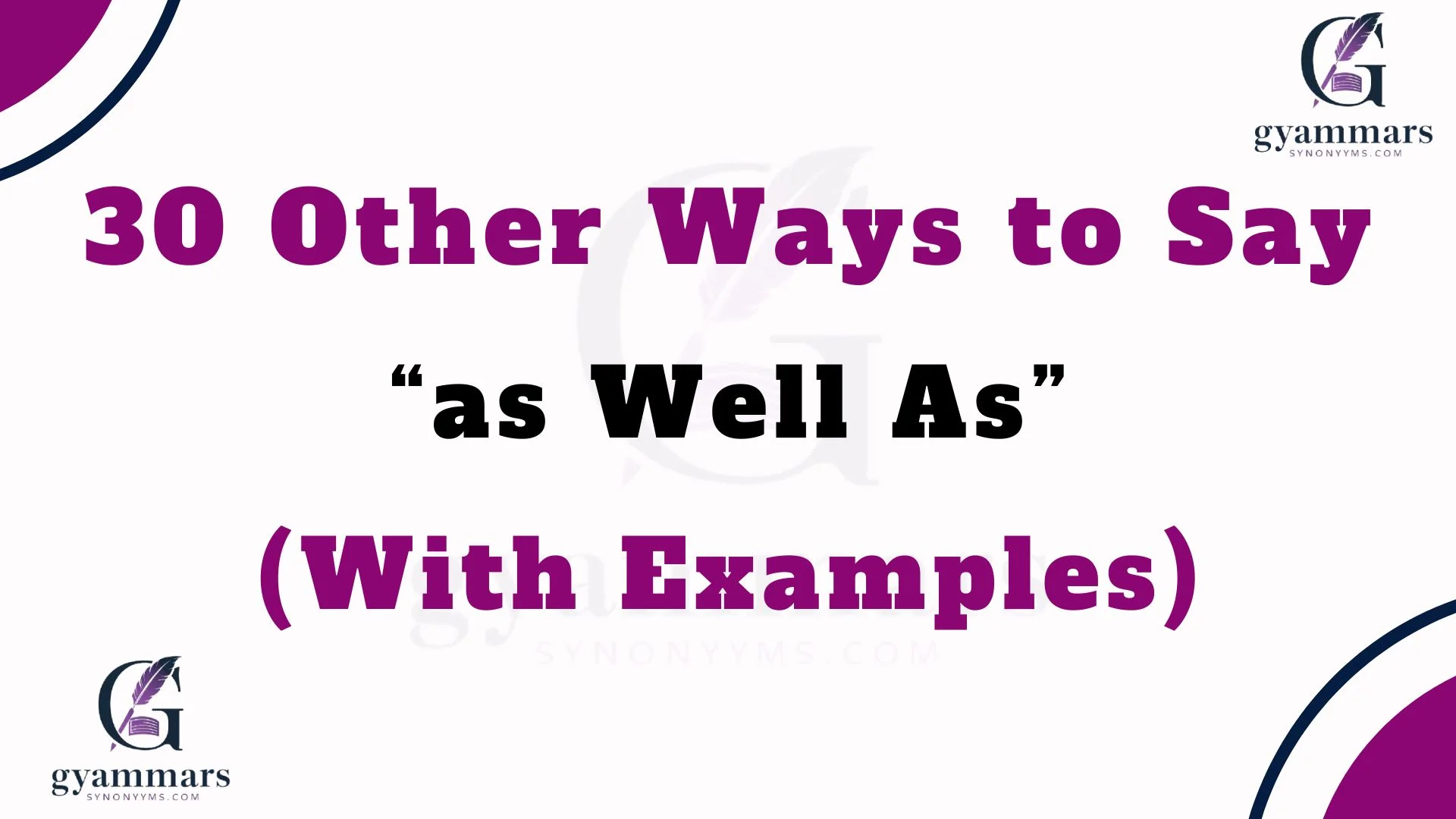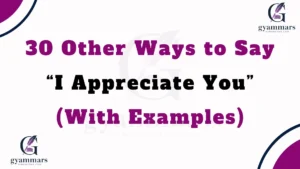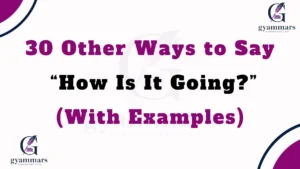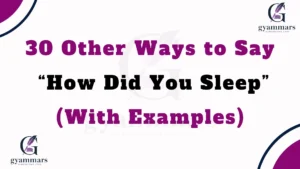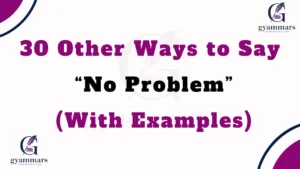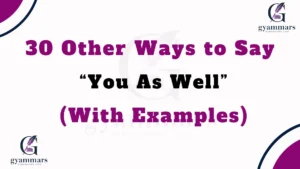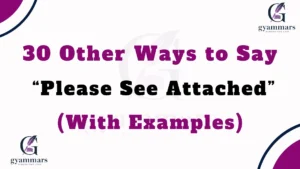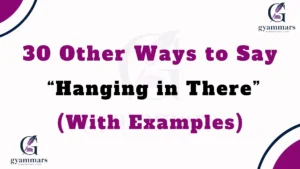Finding the right words can make even the simplest message sound warmer, more thoughtful, and more natural. While “as well as” is a common phrase, using its alternatives can help you sound more personal, polished, or expressive, depending on your tone and context. Whether you’re writing an email, a heartfelt note, or a professional message, knowing different ways to say “as well as” adds depth and warmth to your communication.
Let’s explore what it means, when to use it, and 30 beautiful alternatives to help you express yourself with care and precision.
What Does “as Well As” Mean?
Definition: The phrase “as well as” means in addition to or along with. It’s used to link two related ideas or items together.
Detailed Explanation: It’s slightly more formal than “and,” and it often emphasizes the second part of the sentence. For instance, saying “She’s kind as well as intelligent” adds a sense of balance and admiration that feels softer and more refined than simply using “and.”
Example:
- “He’s a great leader as well as a compassionate person.”
Best Use: Use “as well as” when you want to connect ideas smoothly and respectfully — ideal for both formal and conversational settings.
Tone: Polished, thoughtful, and mildly formal.
Additional Notes: Avoid overusing it in casual speech where a simple “and” would sound more natural.
Is It Professional/Polite to Say “as Well As”?
Yes, absolutely. “As well as” is both professional and polite. It’s a wonderful phrase for workplace emails, academic writing, or everyday conversation when you want to sound inclusive and considerate.
Example (Professional):
- “We value collaboration as well as innovation in our team.”
Example (Personal):
- “I love how you bring humor as well as kindness into every conversation.”
Tone: Warm, respectful, and sophisticated.
Pros or Cons of Using “as Well As”
Pros:
- Sounds more polished than “and.”
- Adds a sense of connection and balance between ideas.
- Works well in both formal and casual writing.
Cons:
- Can sound too formal in friendly or relaxed conversation.
- Sometimes makes sentences wordy if overused.
Tip: Use “as well as” for balance, but sprinkle in synonyms to keep your tone fresh and natural.
Synonyms For “as Well As”
- And
- Along with
- In addition to
- Together with
- Besides
- Plus
- Coupled with
- Including
- Accompanied by
- Alongside
- As well
- Likewise
- Similarly
- Too
- Moreover
- Furthermore
- What’s more
- In conjunction with
- In combination with
- Added to
- Not to mention
- Plus the fact that
- On top of that
- With
- As part of
- Jointly with
- In unison with
- In collaboration with
- As an addition
- Together as
1. And
Definition: A simple conjunction used to connect similar ideas.
Detailed Explanation: “And” is the most straightforward alternative to “as well as.” It’s neutral and universal, perfect for both formal and casual speech.
Example:
- “She’s creative and hardworking.”
Best Use: Everyday writing or speech.
Tone: Neutral and natural.
Additional Notes: Use when you want simplicity and directness.
2. Along With
Definition: Means in the company of or together with.
Detailed Explanation: It emphasizes association or accompaniment, ideal for adding a sense of unity.
Example:
- “He came along with his manager to the meeting.”
Best Use: Professional or narrative writing.
Tone: Friendly yet polished.
Additional Notes: Slightly more conversational than “as well as.”
3. In Addition To
Definition: Means as something extra or supplementary.
Detailed Explanation: Often used in formal contexts to introduce extra points or people.
Example:
- “In addition to her job, she volunteers at a shelter.”
Best Use: Formal writing or presentations.
Tone: Professional and informative.
Additional Notes: Avoid overusing in casual speech.
4. Together With
Definition: Means combined or associated with.
Detailed Explanation: Highlights teamwork or connection between subjects.
Example:
- “The project was completed together with our partners.”
Best Use: Collaborative or group-focused contexts.
Tone: Cooperative and positive.
Additional Notes: Great for business or teamwork writing.
5. Besides
Definition: Means apart from or in addition to.
Detailed Explanation: It adds a friendly, conversational tone while showing inclusion.
Example:
- “Besides cooking, she also loves gardening.”
Best Use: Casual conversation or informal writing.
Tone: Warm and approachable.
Additional Notes: Avoid in overly formal emails.
6. Plus
Definition: Means and also or together with.
Detailed Explanation: Short, direct, and great for modern writing.
Example:
- “She’s smart plus incredibly funny.”
Best Use: Social media, friendly emails, or informal writing.
Tone: Playful and upbeat.
Additional Notes: Adds energy to sentences.
7. Coupled With
Definition: Means combined or joined with.
Detailed Explanation: Often used to show how two qualities enhance each other.
Example:
- “Her intelligence, coupled with determination, makes her unstoppable.”
Best Use: Formal writing or compliments.
Tone: Elegant and refined.
Additional Notes: Avoid in casual text messages.
8. Including
Definition: Means containing as part of the whole.
Detailed Explanation: Great for listing or emphasizing inclusion.
Example:
- “The team, including the interns, attended the meeting.”
Best Use: Lists or group mentions.
Tone: Neutral and clear.
Additional Notes: Perfect for both academic and everyday contexts.
9. Accompanied By
Definition: Means joined by another person or thing.
Detailed Explanation: Adds a descriptive touch, often used in storytelling.
Example:
- “She arrived accompanied by her parents.”
Best Use: Narrative or descriptive writing.
Tone: Formal and graceful.
Additional Notes: Adds visual detail to your message.
10. Alongside
Definition: Means next to or together with.
Detailed Explanation: Suggests cooperation or teamwork.
Example:
- “He worked alongside his mentor on the project.”
Best Use: Professional or teamwork-related contexts.
Tone: Supportive and respectful.
Additional Notes: Common in workplace writing.
11. As Well
Definition: Means too or also.
Detailed Explanation: A simpler version of “as well as,” often placed at the end of a sentence to sound natural and conversational.
Example:
- “I’ll be attending the meeting as well.”
Best Use: Everyday speech and friendly writing.
Tone: Warm, informal, and polite.
Additional Notes: Use it when you want your tone to feel genuine and relaxed.
12. Likewise
Definition: Means in the same way or similarly.
Detailed Explanation: Ideal for showing agreement, similarity, or reciprocity.
Example:
- “She loves reading, and her brother does likewise.”
Best Use: Formal replies or elegant writing.
Tone: Courteous and balanced.
Additional Notes: Common in professional or polite responses.
13. Similarly
Definition: Means in a similar way or manner.
Detailed Explanation: Helps draw comparisons or show parallel ideas.
Example:
- “He enjoys teaching; similarly, his sister loves mentoring others.”
Best Use: Academic writing or structured essays.
Tone: Neutral and informative.
Additional Notes: Use it to connect two matching thoughts logically.
14. Too
Definition: Means also or in addition.
Detailed Explanation: Simple yet effective, it makes communication feel friendly and direct.
Example:
- “I’d love to join you, too.”
Best Use: Informal speech or casual messages.
Tone: Friendly, approachable, and natural.
Additional Notes: Best placed at the end of a sentence.
15. Moreover
Definition: Means furthermore or in addition to that.
Detailed Explanation: Often used in formal writing to add weight or support to a statement.
Example:
- “The plan is cost-effective; moreover, it promotes sustainability.”
Best Use: Academic, business, or persuasive writing.
Tone: Confident and formal.
Additional Notes: Excellent for linking ideas in essays and reports.
16. Furthermore
Definition: Means in addition to what has been said.
Detailed Explanation: Strengthens your argument or adds a related idea smoothly.
Example:
- “The service is affordable; furthermore, it’s highly efficient.”
Best Use: Formal or academic documents.
Tone: Logical and composed.
Additional Notes: Works well for professional tone continuity.
17. What’s More
Definition: Means in addition or even better.
Detailed Explanation: Adds an enthusiastic emphasis, often in persuasive or storytelling contexts.
Example:
- “She’s creative and reliable. What’s more, she’s always early!”
Best Use: Conversational writing or storytelling.
Tone: Engaging and upbeat.
Additional Notes: Adds excitement or friendly energy to your tone.
18. In Conjunction With
Definition: Means together with or in combination with.
Detailed Explanation: Commonly used in professional or technical writing to describe collaboration.
Example:
- “The study was conducted in conjunction with several universities.”
Best Use: Business, academic, or research contexts.
Tone: Professional and precise.
Additional Notes: Avoid in everyday conversation — it’s more formal.
19. In Combination With
Definition: Means used together with something else.
Detailed Explanation: Great for describing elements that enhance each other.
Example:
- “Vitamin C works well in combination with iron.”
Best Use: Technical or instructional writing.
Tone: Objective and factual.
Additional Notes: Often used in health, tech, or science contexts.
20. Added To
Definition: Means alongside or in addition to something already present.
Detailed Explanation: Highlights accumulation or reinforcement of an idea.
Example:
- “Added to her experience, her leadership skills make her a strong candidate.”
Best Use: Professional or persuasive writing.
Tone: Confident and formal.
Additional Notes: Works nicely in resumes or recommendation letters.
21. Not to Mention
Definition: Means plus or as if that’s not enough.
Detailed Explanation: Adds emphasis or extra charm to what’s already been said.
Example:
- “He’s talented and hardworking — not to mention incredibly humble.”
Best Use: Conversational, persuasive, or informal writing.
Tone: Warm and expressive.
Additional Notes: Great for storytelling or compliments.
Read This: 30 Other Ways to Say “Happy to Hear That” (With Examples)
22. Plus the Fact That
Definition: Means in addition to the fact that something is true.
Detailed Explanation: Works when you want to add a clarifying or supporting idea.
Example:
- “I’m tired, plus the fact that it’s been a long week.”
Best Use: Conversational writing.
Tone: Honest and relaxed.
Additional Notes: Common in friendly communication.
23. On Top of That
Definition: Means additionally or besides that.
Detailed Explanation: Adds emotional or emphatic emphasis, often expressing surprise or praise.
Example:
- “She finished early, on top of that, she helped her team.”
Best Use: Informal or storytelling tone.
Tone: Expressive and lively.
Additional Notes: Avoid in very formal business emails.
24. With
Definition: Means accompanied by or together with.
Detailed Explanation: Short but powerful, it works in nearly any context.
Example:
- “Tea with honey is soothing.”
Best Use: All-purpose, universal connector.
Tone: Neutral and natural.
Additional Notes: A strong, versatile alternative for daily use.
25. As Part Of
Definition: Means included within something larger.
Detailed Explanation: Implies membership or inclusion in a group or system.
Example:
- “She contributed as part of the design team.”
Best Use: Professional or collaborative writing.
Tone: Respectful and professional.
Additional Notes: Great for resumes or teamwork-focused writing.
26. Jointly With
Definition: Means together with another person or group.
Detailed Explanation: Highlights shared effort or co-ownership.
Example:
- “The report was written jointly with the marketing department.”
Best Use: Business or legal contexts.
Tone: Formal and cooperative.
Additional Notes: Common in partnership or project language.
27. In Unison With
Definition: Means acting or happening together or in harmony.
Detailed Explanation: Evokes a feeling of teamwork and unity.
Example:
- “The choir sang in unison with perfect harmony.”
Best Use: Creative or collaborative descriptions.
Tone: Harmonious and poetic.
Additional Notes: Adds emotional richness to writing.
28. In Collaboration With
Definition: Means working together with another person or group.
Detailed Explanation: Emphasizes teamwork and partnership.
Example:
- “The program was launched in collaboration with local NGOs.”
Best Use: Corporate or nonprofit communication.
Tone: Cooperative and respectful.
Additional Notes: Common in professional or press release writing.
29. As an Addition
Definition: Means something extra or supplementary.
Detailed Explanation: Used when introducing a new point or person.
Example:
- “As an addition, we’ll include free support for one year.”
Best Use: Promotional or explanatory writing.
Tone: Polished and informative.
Additional Notes: Ideal for business offers or product descriptions.
30. Together As
Definition: Means acting as one unit or entity.
Detailed Explanation: Highlights unity or shared purpose between people or elements.
Example:
- “They worked together as a strong, supportive team.”
Best Use: Inspirational writing or teamwork contexts.
Tone: Uplifting and positive.
Additional Notes: Great for motivational or leadership content.
🌼 Conclusion
Language is powerful — the words you choose shape how others feel your message. Using alternatives to “as well as” lets you express yourself with more warmth, precision, and creativity. Whether you’re writing a professional email or sharing heartfelt words, these phrases help you sound more genuine and fluent.
Next time you’re tempted to say “as well as,” try one of these 30 alternatives to make your words stand out beautifully.
FAQs
1. What can I use instead of “as well as” in formal writing?
Use “in addition to,” “along with,” or “coupled with” for a polished tone in formal or academic writing.
2. Is “as well as” the same as “and”?
Not exactly. “As well as” slightly emphasizes the second idea, while “and” connects two ideas equally.
3. Can I use “plus” instead of “as well as”?
Yes, in informal or creative writing. It adds a lively, conversational tone.
4. Which alternative sounds the most natural in speech?
“And,” “too,” and “as well” are the most natural and friendly in daily conversation.
5. What’s the most professional substitute for “as well as”?
Use “in addition to,” “in conjunction with,” or “together with.” These sound respectful and business-appropriate.

“Emma Brooke at Grammar Synonyms is your trusted source for mastering the art of language. Whether you’re looking for the perfect synonym, refining your grammar, or searching for that one ideal phrase, we’ve got you covered. With a wealth of tools and resources, Emma Brooke brings you creative solutions for all your writing needs, making sure your words always hit the mark. Unlock a world of language possibilities and elevate your writing with ease.”
